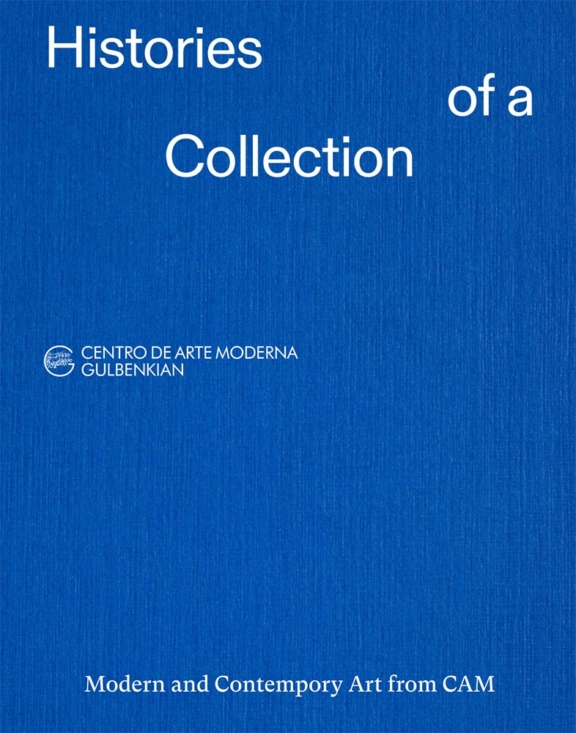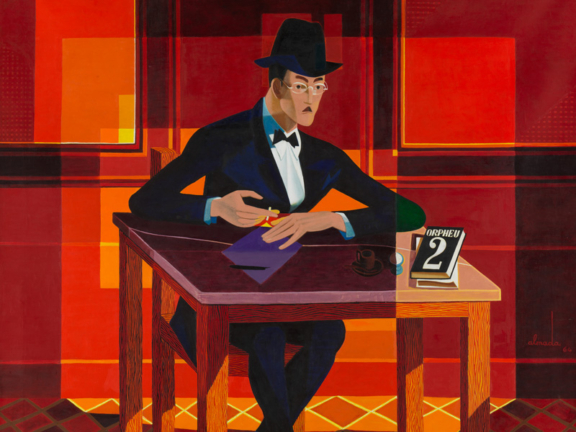
Histories of a Collection
Modern and Contemporary Art from CAM
Event Slider
Date
- Sat,
- Closed on Tuesday
Location
Main Gallery Calouste Gulbenkian FoundationOn Saturday, 9 September, the exhibition will exceptionally close earlier, at 20:00.
Pricing
50% – under 30 years
15% – over 65 years
Free admission – Sunday after 14:00 / Students on Saturdays after 18:00
In the year that marks the 40th anniversary of the Calouste Gulbenkian Foundation’s Modern Art Centre (Centro de Arte Moderna – CAM), Histórias de uma Coleção [Histories of a Collection] is an opportunity to revisit some of the most significant works from the CAM Collection, acquired by the Gulbenkian Foundation since the late 1950s, and to get to know its lesser-known or previously unseen works.
The Calouste Gulbenkian Foundation acquired its first works of modern art in the late 1950s, with the intention of including them in temporary travelling exhibitions organised by the institution. It also purchased works from its grant holders, in the context of the support for artists set up immediately after its creation, in 1956. The Modern Art Centre Collection thus began to take shape, now boasting around twelve thousand works.
During the 1960s, the first groups of works purchased for the Collection included works by key figures in the national and international art scene, such as Amadeo de Souza Cardoso, José de Almada Negreiros and Maria Helena Vieira da Silva. The British artworks were mostly acquired between 1960 and 1965, featuring major players such as David Hockney and Bridget Riley.
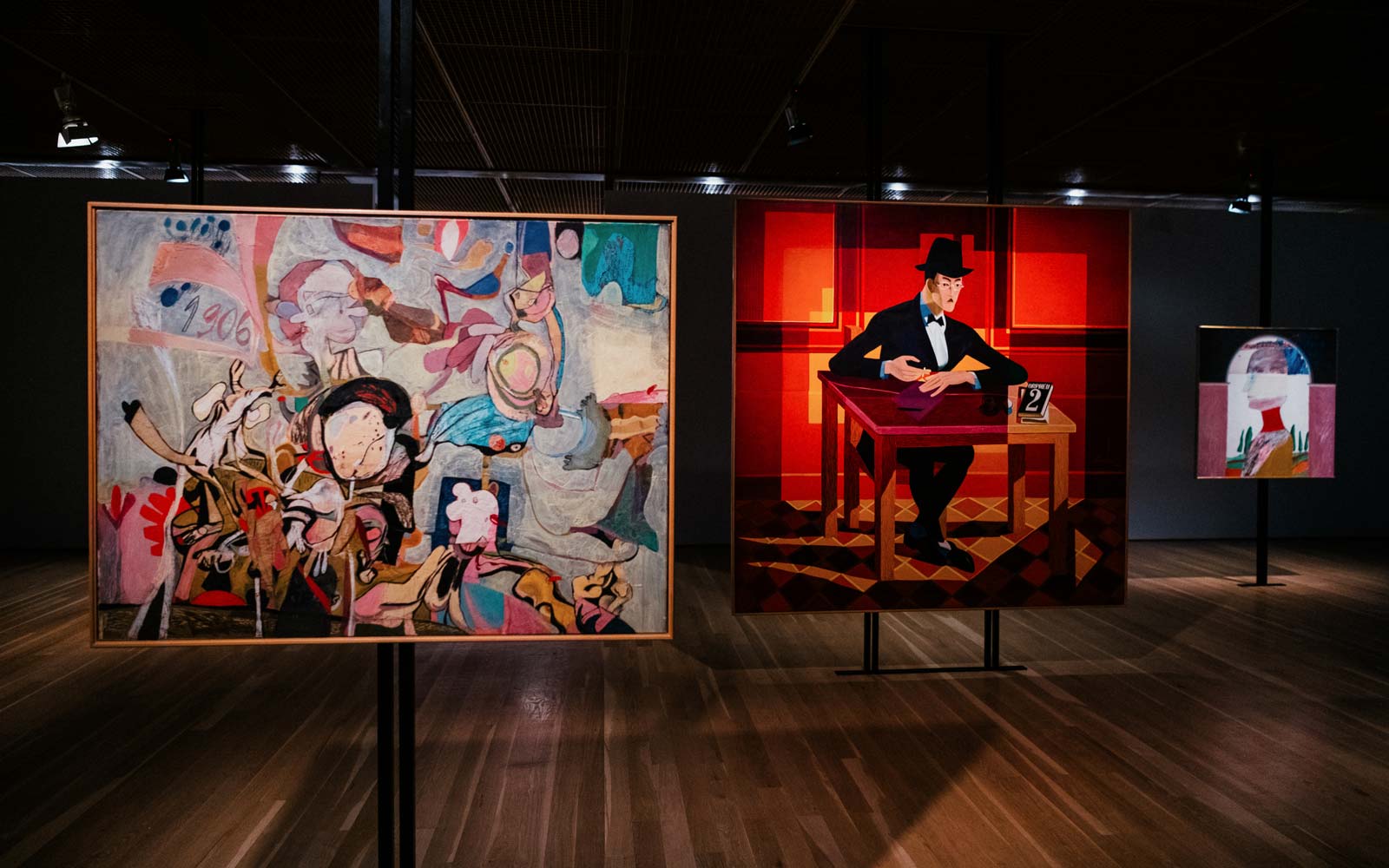
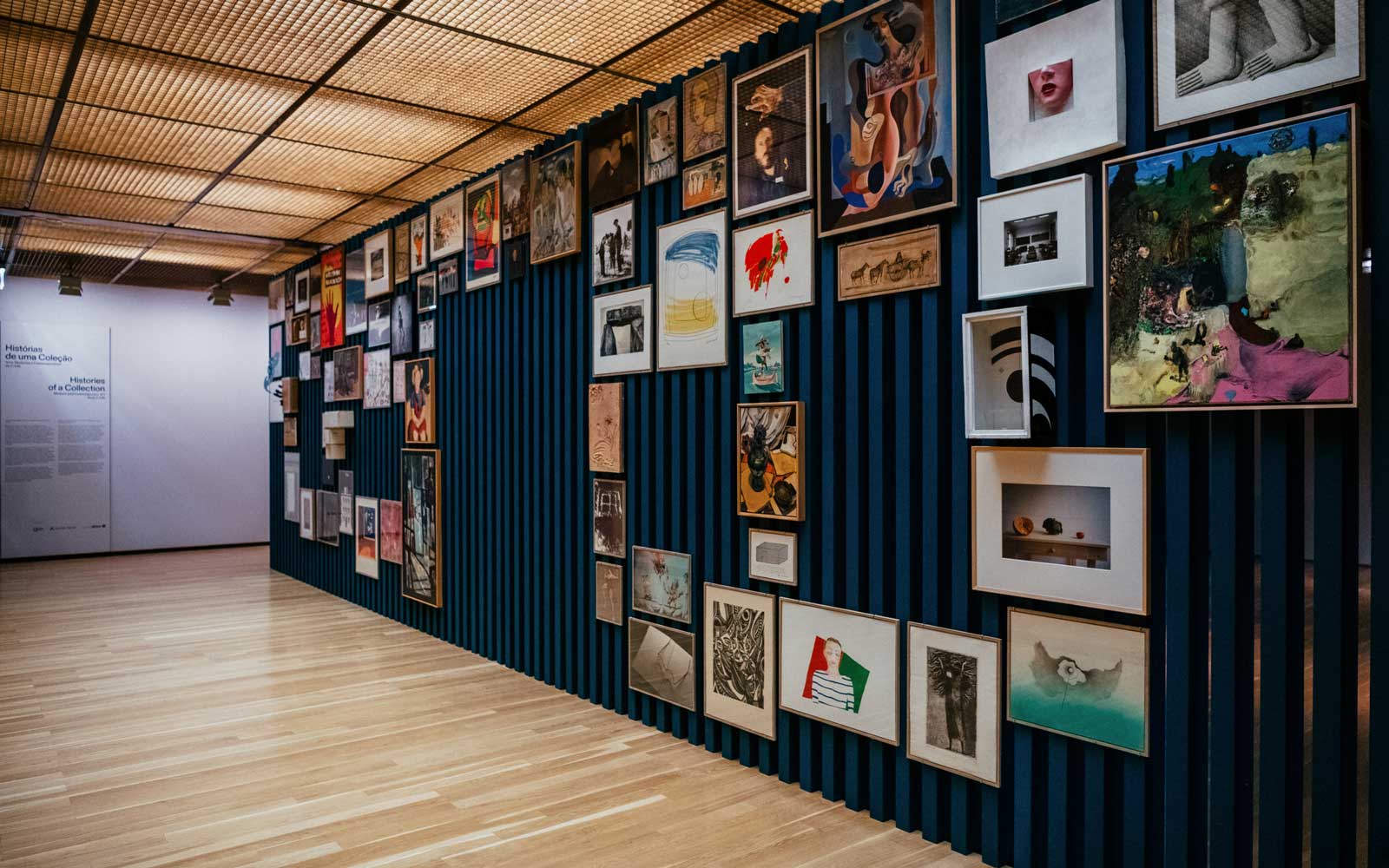
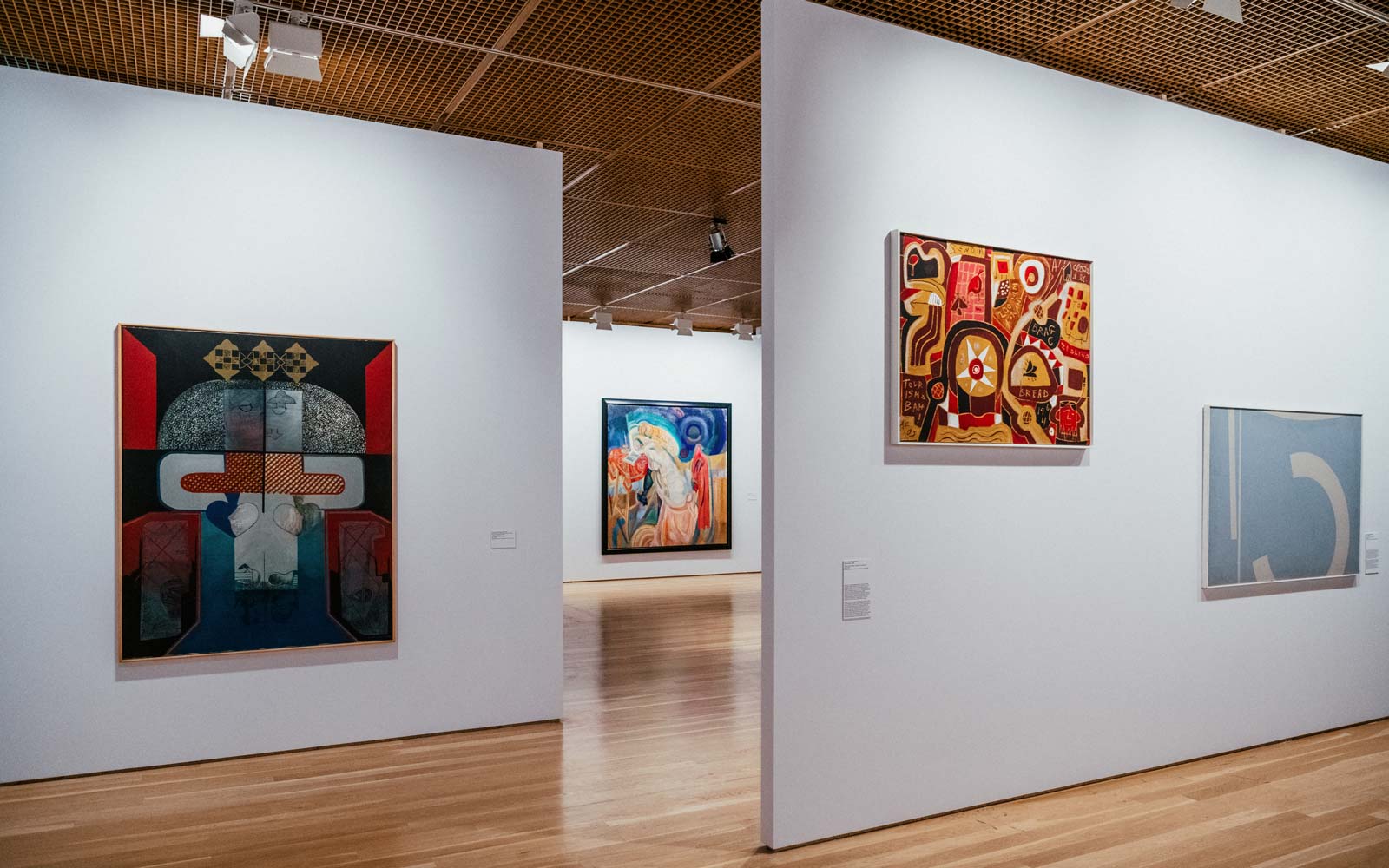
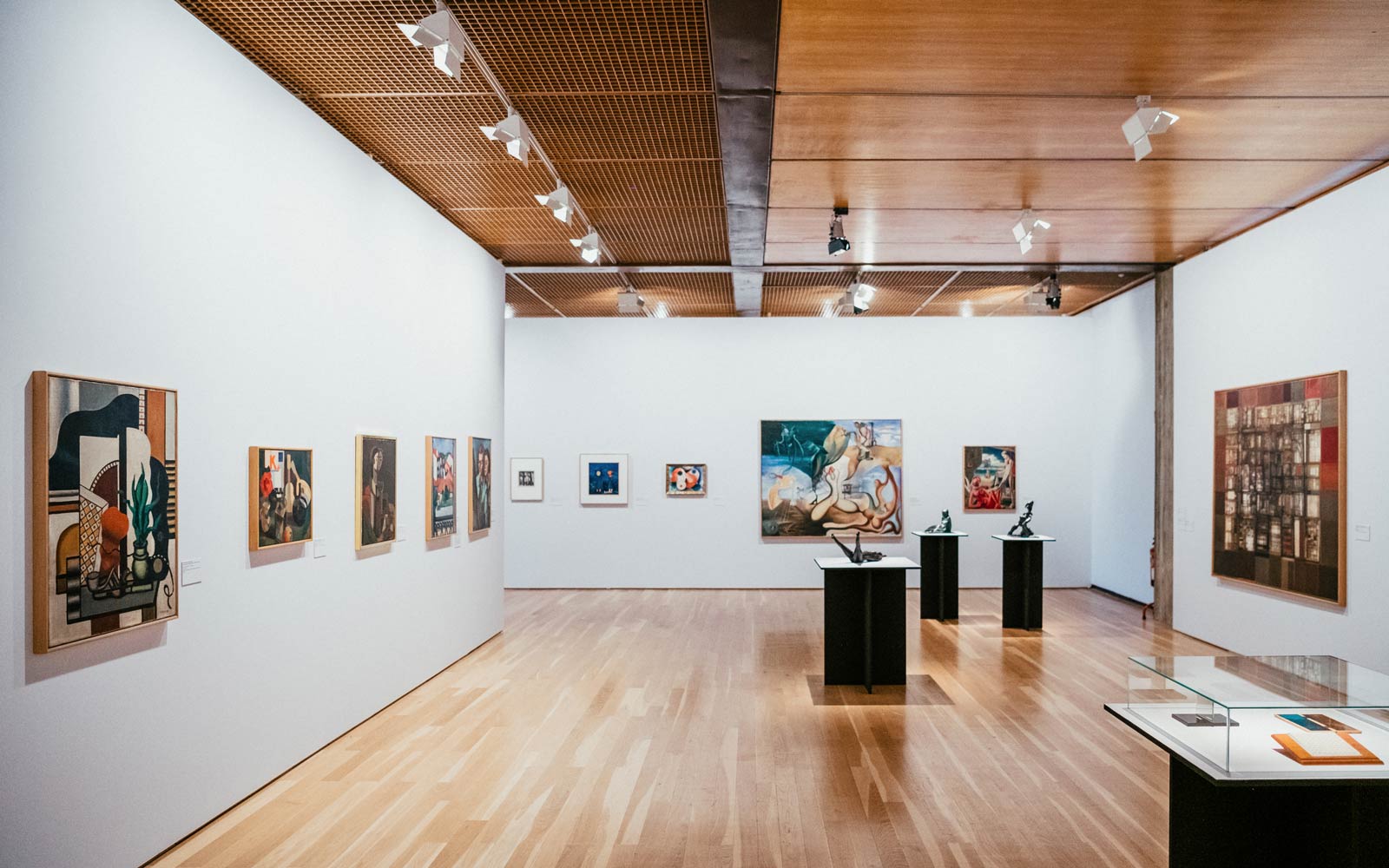
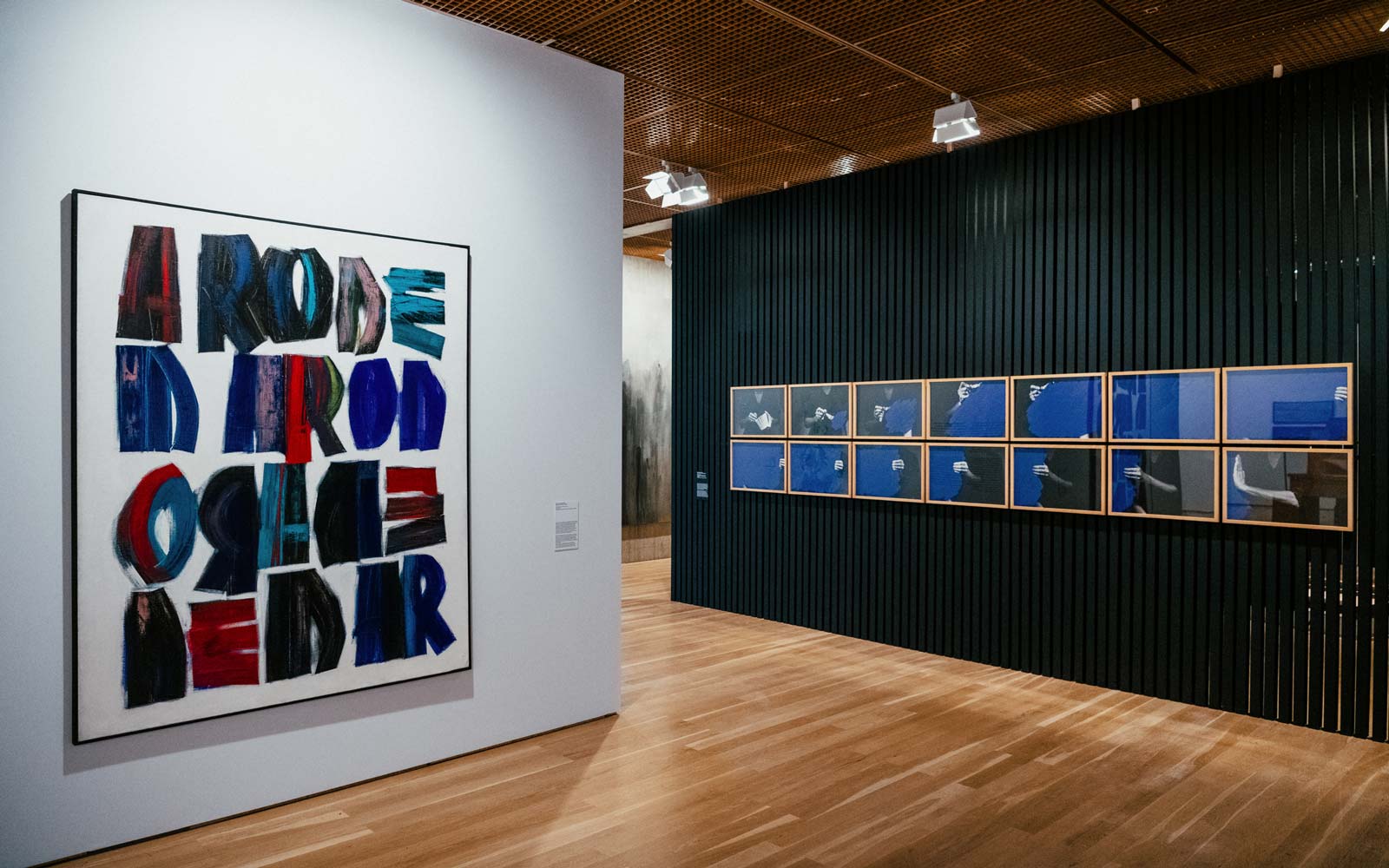
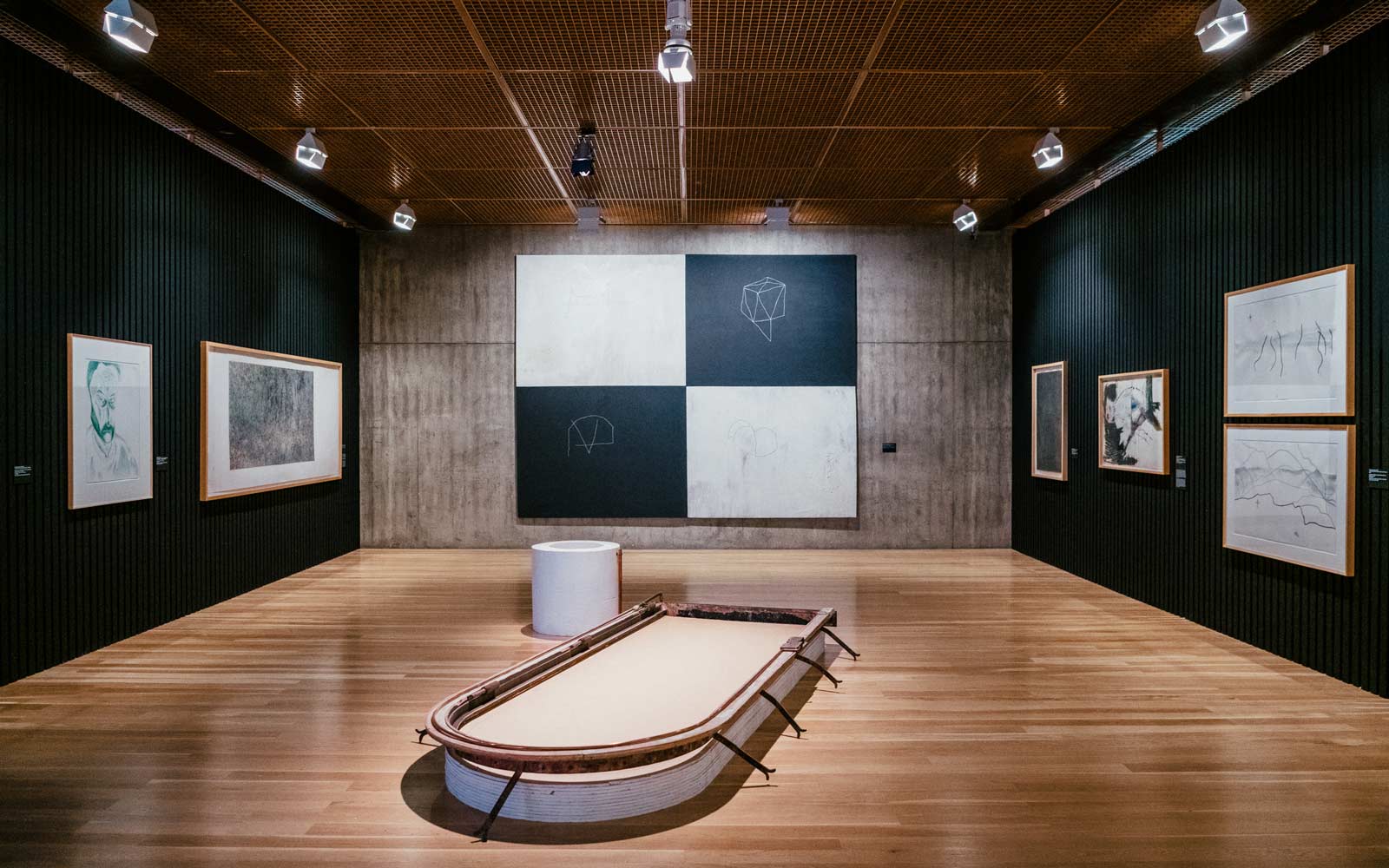
The desire to build a space to house this burgeoning collection of modern art, which now included a significant number of national and international artists, was made official in 1979. The Modern Art Centre opened on 20 July 1983 with an innovative programme making up for the lack of a museum in Portugal dedicated to the promotion of 20th-century art.
The Collection grew exponentially from then on, leading to the purchase of works by a diverse range of artists in a plethora of media and supports. Built up over more than 60 years, the CAM Collection is the result of various encounters, intimacies, rifts, aesthetic relationships and contrasting artistic languages.
With an innovative presentation, Histórias de uma Coleção aims to bring together a wide spectrum of works covering different eras, geographies and artistic dynamics, underpinned by new narratives and interpretations. Key moments that explore the constitution of the CAM Collection will be highlighted, accompanied by a catalogue, with essays by the exhibition curators, among others, as well as a parallel programme to the exhibition that will seek to open space for reflection on what the CAM Collection represents and on models of collecting, allowing the public to comes closer to the works in the Collection and the stories they have to tell.
Explore the artworksTopics

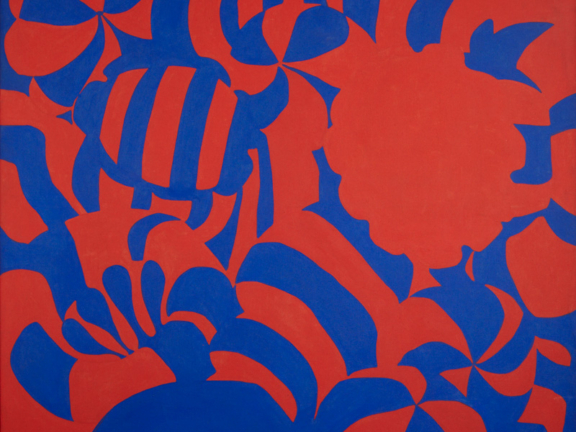
The Beginning

‘We must inaugurate it’

Beyond the Fine Arts
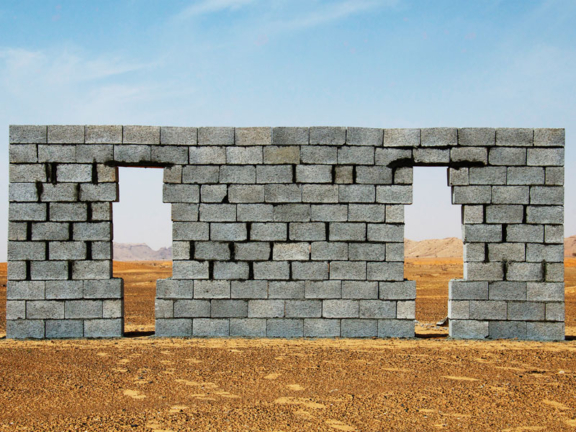
Permanent and temporary
-
First acquisitions
1960s
These seven works are connected by the fact that they were acquired during the 1960s, a time when the Calouste Gulbenkian Foundation (FCG) was establishing itself both nationally and internationally, highly focused on the artistic development in the country.
Paula Rego and João Cutileiro stand out as two of the first grant-holders at Slade School of Fine Arts, in London. At the same time, the works by Phillip King and David Hockney signal the importance of the support given to young artists in the United Kingdom, through acquisition subsidies granted to the British Council, which gave rise to the creation of the FCG’s section of British modern art.
Paintings by Amadeo de Souza-Cardoso and Maria Helena Vieira da Silva were acquired on the trip the first president of the FCG, José de Azeredo Perdigão, made to Paris with the intention of forming an important section of art works for what was then being planned as the Contemporary Art Gallery.
Finally, the painting commissioned to José de Almada Negreiros is also the result of a close relationship with the artist, who was later commissioned to create the Começar [To Begin] panel for the entrance to the Main Building.
-
The Beginning
1958-1978
FCG’s first acquisitions of artworks were made in 1958, following the institution’s creation in 1956, in the context of grants and subsidies awarded to artists. Artworks were also purchased with the aim of bringing together pieces to be presented in travelling temporary exhibitions organised in the 1960s by the FCG in Portugal, or at exhibitions in which it played a partnership role, in cities such as Rio de Janeiro, Baghdad, Madrid, Brussels and Paris.
In the 1970s, the FCG began to organise more and more temporary exhibitions, with the collaboration of national and international partners and a focus on contemporary art. The collection of modern and contemporary art emerged in the temporary exhibition galleries of the FCG’s headquarters, disseminated in the shows of great artists. The acquisitions now stemmed from the temporary exhibitions organised at the initiative of the FCG.
-
‘We must inaugurate it’
1979-1989
By the late 1970s, it was regarded as essential for the FCG and its president, José de Azeredo Perdigão, to construct a building to house the collection of modern and contemporary art amassed thus far.
To further enhance the collection, the Foundation took the opportunity to purchase a significant part of the remarkable collection of Jorge de Brito, a great admirer of the work of Maria Helena Vieira da Silva and the modernist Portuguese artists.
The exhibition Antevisão do CAM [Preview of the CAM] opened in 1981 at the FCG’s headquarters, and exhibited many of the works now on display. It sought to inform the public about the project for the new Centro de Arte Moderna (CAM), as well as presenting a significant group of works from the collection that had been strengthened in recent years with a view to constituting a cohesive collection of 20th-century Portuguese art.
CAM opened on 20 July 1983 as the first space in Portugal with a permanent exhibition of modern and contemporary art – with 540 Portuguese and international art works by 252 artists – with the architect José Sommer Ribeiro becoming its first director.
-
Beyond the Fine Arts
1990-2005
With Jorge Molder as director (1994–2009), the Collection became highly systematic in relation to the prominent artists of the 1980s, who remained very active in the decade that followed and were frequently to be found around the FCG amid the lively scene of the ACARTE and the Bairro Alto and the buzz of a certain post-modernism. Jorge Molder was one of the epicentres of this exhilarating whirlwind, precisely because it was he who programmed exhibitions and made purchases for the best and most significant Portuguese art collection of the 20th and 21st century.
The new generation of creators of sculptures, paintings and drawings would become well represented, as well as a very broad range of other mediums and supports. There was an artistic boom in which freedom and novelty definitively broke away from the canons of the Fine Arts, while the latter were also perpetuated and acclaimed. Meanwhile, Jorge Molder forged a path for the frequent and enthusiastic acquisition of photography, regarded as an artistic object and conceptual proposal. In it, he had found a kind of internal bridge between his own art and the role of cultural agent.
-
Permanent and temporary
2009-2020
Between 2009 and 2015, under the direction of Isabel Carlos, CAM launched a new phase with an intensive annual cycle of temporary exhibitions and regular presentations of the Collection. Focusing on contemporary artistic production and revisiting the work of Portuguese artists, the programme promoted the growth of the collection through acquisitions that reflected the exhibitions.
In addition to filling gaps in the Collection, with particular focus on women artists, acquisitions thus tended towards larger-scale works, including installations, sculptures as well as photography, taking into account the characteristics of the building.
In 2016, the collections of CAM and the Museum were brought together under the name Calouste Gulbenkian Museum and for the first time, CAM curators took part in the selection of works, coordinated by the new director Penelope Curtis and evaluated by external advisory committees.
The acquisitions from this period sought to respond to different criteria, such as historical gaps in the Collection, the inclusion of works by emerging artists, with the integration of more diverse works in terms of supports and techniques, with a focus on video-installation, and greater investment in female creators and works by artists from countries with Portuguese as an official language.
Publications
Complementary Programs
Group visits
Guided tour
In Portuguese and English
Saber mais
Credits
Curators
Ana Vasconcelos
Leonor Nazaré
Patrícia Rosas
Rita Fabiana
Exhibition Design
Rita Albergaria
Graphic Project
Márcia Novais

